Figures & data
Figure 1. Effect of VRK1 on different histones in response to different types of stimulation and its interactions with different types of enzymes performing histone posttranslational modifications. VRK-IN-1: VRK inhibitor 1. MG149: Tip60 inhibitor. HDAC1: histone deacetylase 1. PCAF: (P300/CBP-Associated factor or KAT2B), SETDB1: SET domain bifurcated histone lysine methyltransferase 1 or KMT1E. KDM3A: Lysine demethylase 3A or JHMD2A. KDM4A: Lysine demethylase 4A. SIRT1: NAD-Dependent protein deacetylase sirtuin-1. SIRT 2: NAD-Dependent protein deacetylase sirtuin-2.
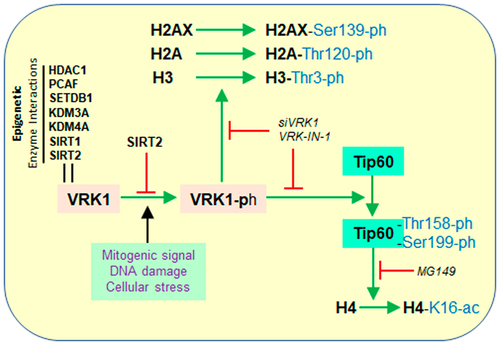
Figure 2. VRK1 in proliferation and cell cycle progression. Basal VRK1 expression is increased in response to mitogenic signals. Arrows: indicate direct phosphorylations (green) or dephosphorylation (red). Direct protein interactions (blue lines).
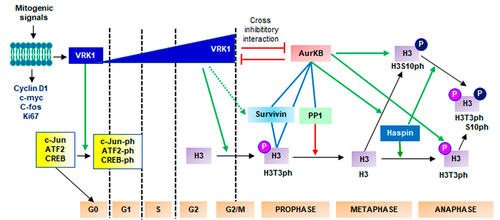
Figure 3. VRK1 and DNA damage responses. Diagram illustrating the main pathways triggered by DNA damage in the response to different types of DNA damage, and the implication of VRK1 in different steps of the process, from altered chromatin to repair pathways.
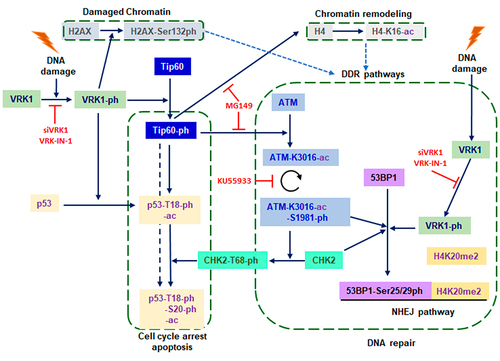
Figure 4. Regulation of BAF by VRK1 in mitotic progression. Red and green arrows indicate repression or activation respectively. Black arrows indicate the activity of VRK1 kinase and the PP2A and PP4C phosphatases.
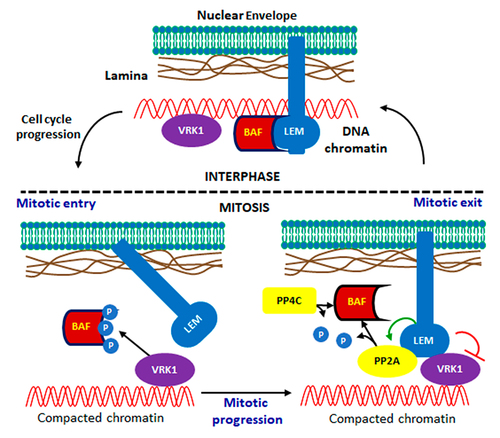
Figure 5. VRK1, Cajal bodies and neurological diseases altered by VRK1 variants. VRK1 phosphorylates coilin that is translocated to the Cajal bodies, where it interacts with SMN. Alterations in the process by pathogenic variants of VRK1 impair different nuclear proteins and lead to very severe neurological diseases. SMA: spinal muscular atrophy. CMT: Charcot-Marie-tooth. HSP: hereditary spastic paraplegia. DHMN: distal hereditary motor neuropathies. FTD: front- temporal degeneration. ALS: amyotrophic lateral sclerosis. VCP (valosin containing protein). Ku70/80 (ATP dependent helicases). VRK1 and VCP mutant proteins are associated with amyotrophic lateral sclerosis (ALS). Red lines: disease. Green lines: interactions.
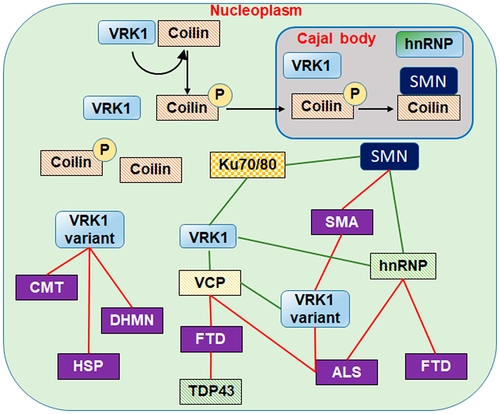
Figure 6. Targeting of epigenetic modifiers in cancer treatment. The combined drug targeting facilitates a switch from repair mechanisms toward damage accumulation. Different drugs combination in synthetic lethality strategies might facilitate a reduction of individual drug dose, and thus their toxicity, while promoting damage accumulation leading to tumor cell death.
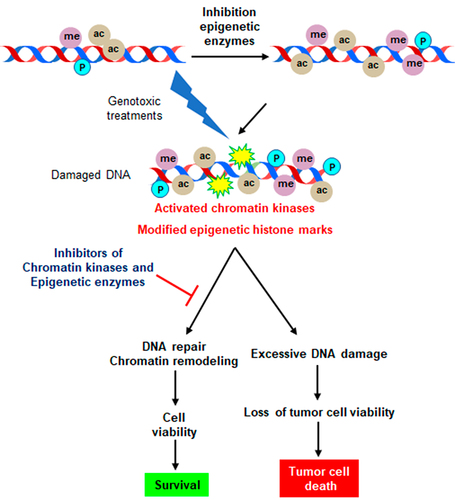
Data availability statement
Data sharing is not applicable to this article as no new data were created or analyzed in this study.
